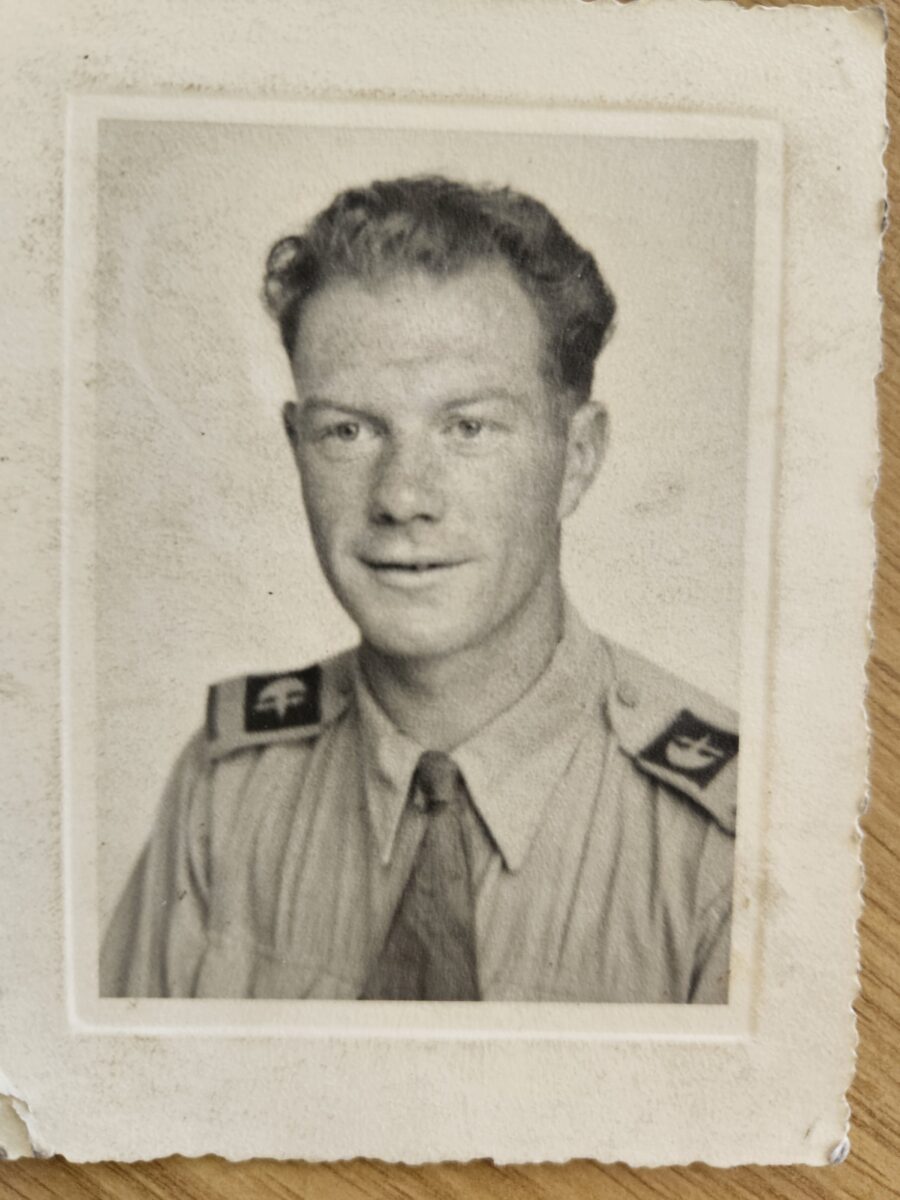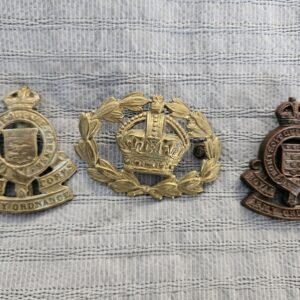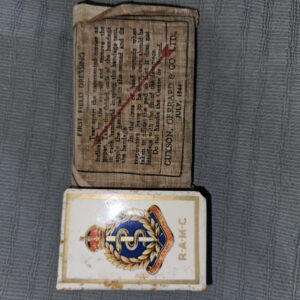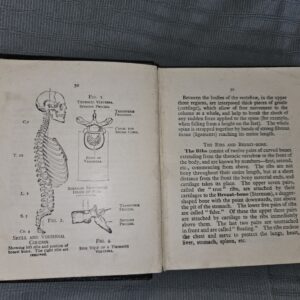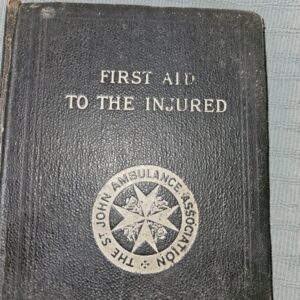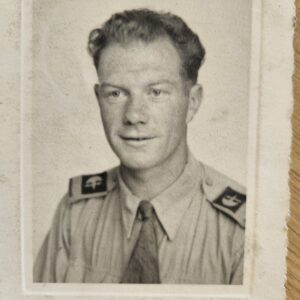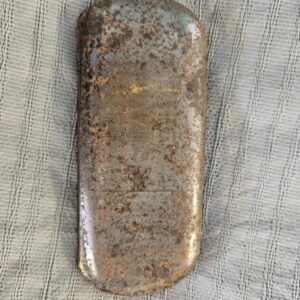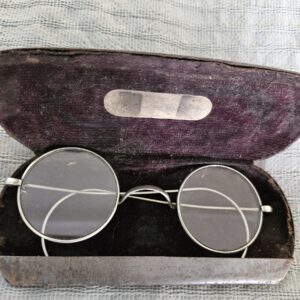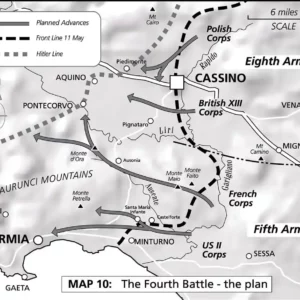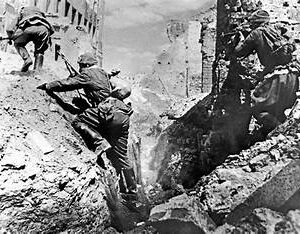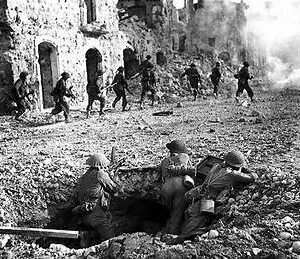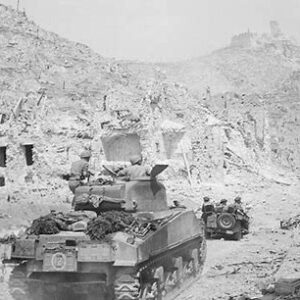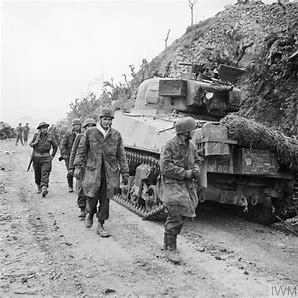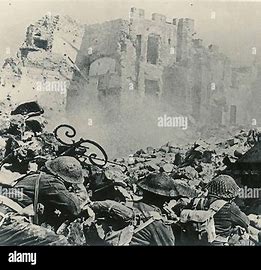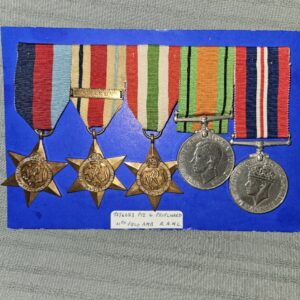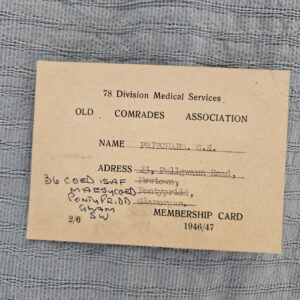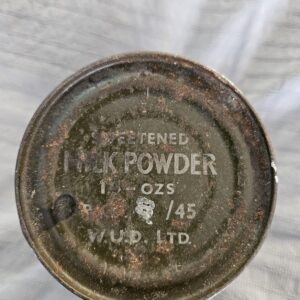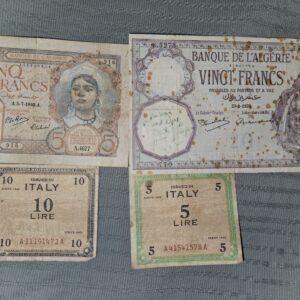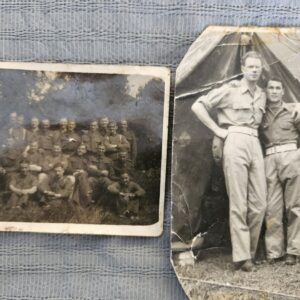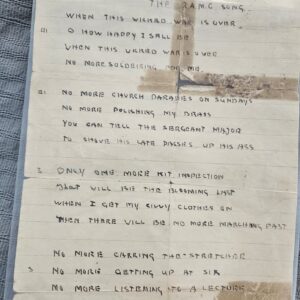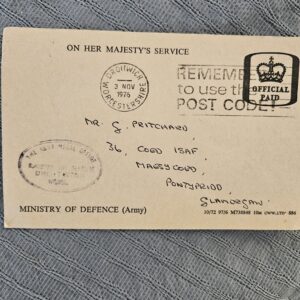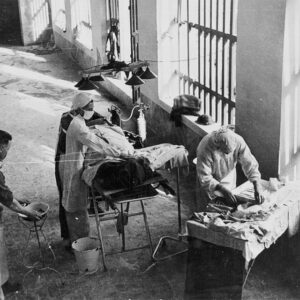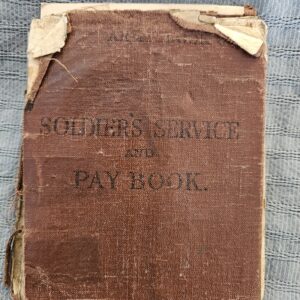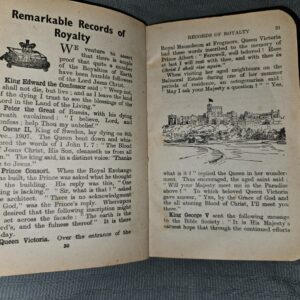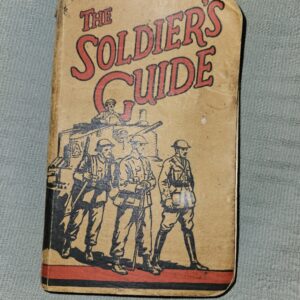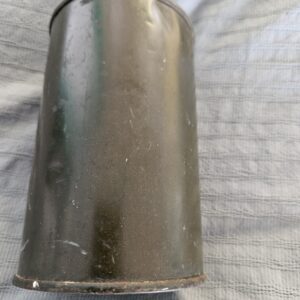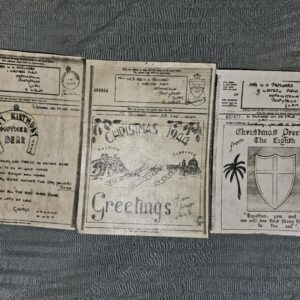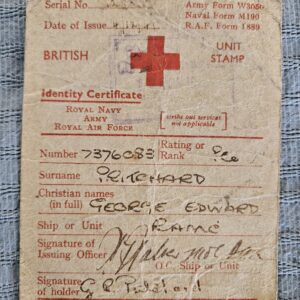George joined the army in Royal Army Medical Corps and fought in Italy with the 8th Army including the battle of Monte Cassino and was the 1st Army in North Africa. You will see from the insignia on his shoulders that he was part of the 78th Infantry Division, also known as the Battleaxe Division, and was an infantry division of the British Army, raised during the Second World War that fought, with great distinction, in Tunisia, Sicily and Italy from late 1942–1945.
On 25 May 1942, the 78th Infantry Division was formed in Scotland specifically as an assault formation for Operation Torch. The division’s first General Officer Commanding (GOC) was Major General Vyvyan Evelegh, and the division comprised the 1st Infantry Brigade (Guards) and the 11th and 36th Infantry Brigades, along with supporting units. its formation, the war establishment (the on-paper strength) of an infantry division was 17,298 men.[3] The divisional insignia, representing a battle axe as used by a crusader, was selected by Evelegh. A variant of the insignia featured the battle axe on a circular background. All versions displayed the blade facing to the left. The insignia gave rise to the formation’s nickname: Battleaxe Division. Historian Michael Chappell wrote that the insignia “was proudly worn on just about all forms of dress” and to the exclusion of other insignia such as “regimental titles, [and] arm-of-service strips”.
During the Anglo-American meeting in London, in July 1942, Operation Gymnast was revived. The revised plan, known as Operation Torch, sought to clear Africa of Axis forces and release Allied shipping, relieve pressure on the Soviet Union, and allow American ground forces to engage the Germans. George was with the first Army to enter North Africa.
Tunisian Campaign
Hereafter the division, assigned mainly to Lieutenant General Charles Allfrey’s V Corps, had a prominent role in the Tunisian Campaign, gaining an excellent reputation. In December 1942 Major Wallace Le Patourel of the 2nd Battalion, Hampshire Regiment was awarded the 78th Division’s first Victoria Cross (VC) of the war.
Private Stephens of the 5th Battalion, Northamptonshire Regiment rides a captured German motorcycle combination, Tunisia, 14 January 1943.
In February 1943 the 1st Infantry Brigade (Guards) was exchanged for the 38th (Irish) Infantry Brigade of the 6th Armoured Division. The 78th was to remain with this com-position for the rest of the war. The division participated in the final stages of Operation Ochsenkopf and the subsequent operations, including the capture of Longstop Hill in April, which eventually led to the end of the campaign in Tunisia in mid-May, with nearly 250,000 Axis soldiers surrendering. It was during the capture of Longstop that the 78th Division gained its second VC of the war, belonging to Major John Anderson, Commanding Officer (CO) of the 8th Battalion, Argyll and Sutherland Highlanders.
With the end of hostilities in North Africa the 78th Division participated in the Victory Parade in Tunis and had a rest after nearly six months of continuous fighting.The First Army was disbanded soon afterwards, and the 78th Division was transferred to the veteran British Eighth Army, commanded by General Sir Bernard Montgomery.
Sicily and Italy
The 78th Division was initially held in reserve in North Africa for the Allied invasion of Sicily and spent the time bringing units up to strength with reinforcements, and training for future operations. However, Montgomery’s Eighth Army, facing stiff German resistance, requested reinforcements and the 78th landed in Sicily in late July 1943, where it became part of Lieutenant General Sir Oliver Leese’s XXX Corps.The division fought with distinction in Sicily, in particular at the Battle of Centuripe in August 1943.
The division then, after a short rest after the fighting in Sicily was over, went on to fight in the Italian campaign, landing in Italy in late September 1943, transferring back to Lieutenant General Allfrey’s V Corps. Notable engagements in Italy (where, from December 1943 onwards the division was commanded by Major General Charles Keightley)[ include the assaults on the Viktor Line (Battle of Termoli), the Moro River Campaign, the Barbara Line and the Winter Line as well as the Battle of Monte Cassino–also known as the Battle for Rome. This was a series of four military assaults by the Allies against German forces in Italy during the Italian Campaign of World War II. They made the assault one of the most truly international of all the Allied joint operations. The objective was to break through the Winter Line and facilitate an advance towards Rome.
Theatre commander Lieutenant General Mark Clark was moved to write, “The battle for Cassino was the most gruelling, the most harrowing, and in one respect the most tragic, of any phase of the war in Italy.”
Losses for the Allied forces numbered 105,000 casualties, and the Germans suffered 80,000 casualties.
.
The 78th Division was considered to be one of the best divisions of the British Army during the Second World War, due to its high morale and excellent leadership, and General Montgomery believed it to be the best mountain warfare division in the British Eighth Army. This view was shared by many senior commanders, such as Lieutenant General Charles Allfrey, commander of V Corps, who claimed the 78th Division was the “finest fighting division of any that I had the privilege to have in ‘V’ Corps”.
Source: Wikipedia
